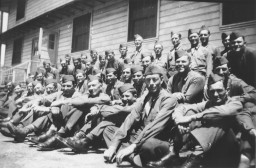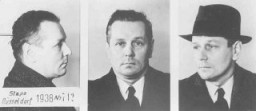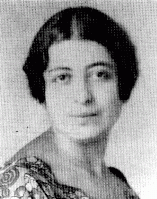You searched for: %E4%B8%BA%E4%BB%80%E4%B9%88%E8%A6%81%E6%8A%95TikTok%20%E3%80%90%E8%B4%AD%E4%B9%B0%E7%BD%91%E5%9D%80tiktokads.cc%E3%80%91%E3%80%90tiktok%E8%8A%82%E7%82%B9%E6%90%AD%E5%BB%BA%EF%BC%8Ctiktok%E5%8F%98%E7%8E%B0%E4%BA%A4%E6%B5%81%E7%A4%BE%E7%BE%A4%EF%BC%8C%E5%87%BA%E5%94%AEtiktok%E9%82%80%E8%AF%B7%E7%A0%81%EF%BC%8Ctiktok%E5%B9%BF%E5%91%8A%E8%B4%A6%E6%88%B7%EF%BC%8CTiktok%E5%B9%BF%E5%91%8A%E4%BB%A3%E6%8A%95%EF%BC%88%E9%AB%98%E8%BD%AC%E5%8C%96%E7%8E%87%EF%BC%89%E3%80%8A%E5%87%BA%E5%94%AE%E7%BD%91%E5%9D%80tiktokads.cc%E3%80%8Btiktok%E5%B0%8F%E5%BA%97%E9%82%80%E8%AF%B7%E7%A0%81%E3%80%91Tiktok%E5%88%B7%E7%B2%89%E4%B8%9D
<< Previous | Displaying results 391-400 of 484 for "%E4%B8%BA%E4%BB%80%E4%B9%88%E8%A6%81%E6%8A%95TikTok%20%E3%80%90%E8%B4%AD%E4%B9%B0%E7%BD%91%E5%9D%80tiktokads.cc%E3%80%91%E3%80%90tiktok%E8%8A%82%E7%82%B9%E6%90%AD%E5%BB%BA%EF%BC%8Ctiktok%E5%8F%98%E7%8E%B0%E4%BA%A4%E6%B5%81%E7%A4%BE%E7%BE%A4%EF%BC%8C%E5%87%BA%E5%94%AEtiktok%E9%82%80%E8%AF%B7%E7%A0%81%EF%BC%8Ctiktok%E5%B9%BF%E5%91%8A%E8%B4%A6%E6%88%B7%EF%BC%8CTiktok%E5%B9%BF%E5%91%8A%E4%BB%A3%E6%8A%95%EF%BC%88%E9%AB%98%E8%BD%AC%E5%8C%96%E7%8E%87%EF%BC%89%E3%80%8A%E5%87%BA%E5%94%AE%E7%BD%91%E5%9D%80tiktokads.cc%E3%80%8Btiktok%E5%B0%8F%E5%BA%97%E9%82%80%E8%AF%B7%E7%A0%81%E3%80%91Tiktok%E5%88%B7%E7%B2%89%E4%B8%9D" | Next >>
-
International Military Tribunal at Nuremberg
ArticleThe International Military Tribunal (IMT) opened in Nuremberg within months of Germany’s surrender. Learn about the judges, defendants, charges, and legacies.

-
Ritchie Boys
Article“Ritchie Boys” is a term used for American soldiers who trained at Camp Ritchie during World War II. Several thousand were Jewish refugees from Europe. Learn more.

-
Gay Men under the Nazi Regime
ArticleThe Nazi regime carried out a campaign against male homosexuality and persecuted gay men between 1933 and 1945.

-
Eugeniusz Rozenblum
ID CardEugeniusz's parents married in 1922 in the Soviet Union, where his father owned a textile mill. Fearing arrest by the Soviets for being "bourgeois," Eugeniusz's parents fled to Poland, where Eugeniusz was born. 1933-39: Eugeniusz was a secondary school student and was preparing to enter university, either in Poland or at the Hebrew University in Palestine. The German occupation of Lodz in September 1939 interrupted his schooling. One month after the occupation, a German soldier came to his family's door…

-
Ludmilla Schatz
ID CardLudmilla was one of four children born to Jewish parents in a small industrial city in southwestern Ukraine when the area was part of Tsarist Russia. Ludmilla grew up in Odessa, but she and her mother left in 1919 when Ludmilla's father was killed during the Russian civil war. Ludmilla and her mother emigrated to France and settled near Paris. Ludmilla married, and gave birth to a daughter in 1930. 1933-39: With her knowledge of Russian, French and German, Ludmilla felt comfortable in cosmopolitan Paris.…

-
Magda Rein
ID CardMagda was the oldest of two children born to observant Jewish parents. They lived in Satoraljaujhely, a town in northeastern Hungary on the Czechoslovakian border. Jews represented some 20 percent of the town's approximately 18,000 persons. Magda's father owned a bakery; her mother was a midwife. 1933-39: At 10 years of age, Magda began accompanying her mother when she attended to births nearby. Her mother helped all women--Jews, Roma (Gypsies) and peasants in the surrounding villages. When Magda was 12,…

-
Pawel Zenon Wos
ID CardPawel was the oldest of four children born to Roman Catholic parents in Poland's capital of Warsaw. Pawel's father had worked for the Polish merchant marine before starting his own textile business in 1930. The family moved to a comfortable apartment near the Royal Castle and the Vistula River. Pawel excelled in sports, including basketball and tennis. His favorite sport was rowing. 1933-39: In May 1939 Pawel became an army reserve officer and went to training camp near Augustow. On the morning of…

-
Itka Wlos
ID CardItka was raised in a Yiddish-speaking, religious Jewish family in Sokolow Podlaski, a manufacturing town in central Poland with a large Jewish population of about 5,000. Itka came from a poor family. After completing her public schooling in Sokolow Podlaski at the age of 14, she began to work. 1933-39: Itka was a young woman, unmarried and living with her parents when war between Germany and Poland broke out on September 1, 1939. German aircraft bombed Sokolow Podlaski's market and other civilian targets…

-
Chaim Werzbe
ID CardChaim was raised in a Yiddish-speaking, religious Jewish family in Sokolow Podlaski, a manufacturing town in central Poland with a large Jewish community of about 5,000. The economic activities of most of the townspeople were closely tied to those of nearby Warsaw and surrounding farming communities. As a young man, Chaim liked to play chess and was active in a local Zionist organization. 1933-39: Chaim made a living in the grain business. After settling down, he married a widow who was older than he and…

-
Fela Perznianko
ID CardFela was the older of two children born to Jewish parents living in Zakroczym, a town on the Vistula River near Warsaw. Her father was a respected attorney. As a young woman, Fela worked as a hat designer in Warsaw, until she married Moshe Galek when she was in her late 20s. She moved to the nearby town of Sochocin, where her husband owned a pearl-button factory. Fela and Moshe raised four daughters. 1933-39: In 1936 the Galeks moved to Warsaw, attracted by the city's cultural life. When Germany invaded…

